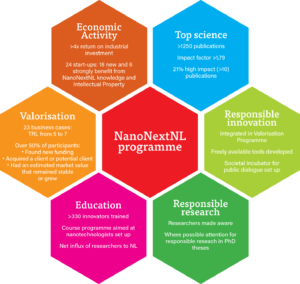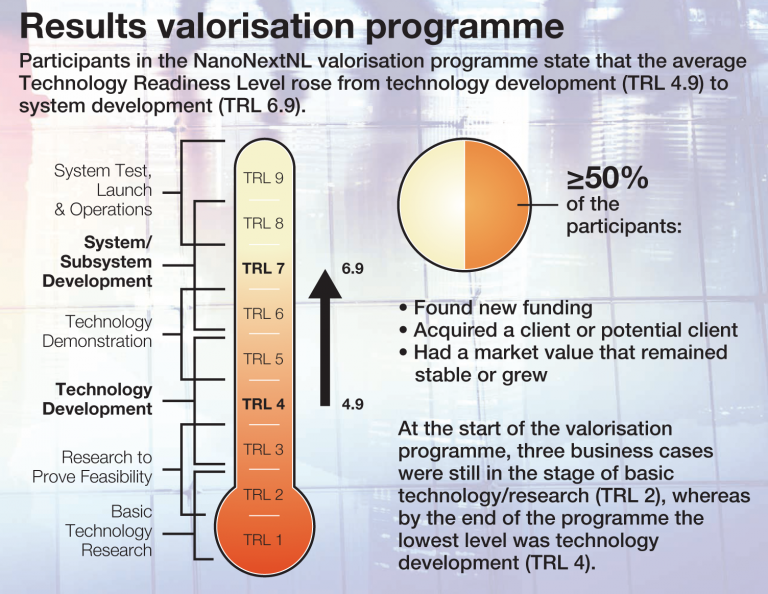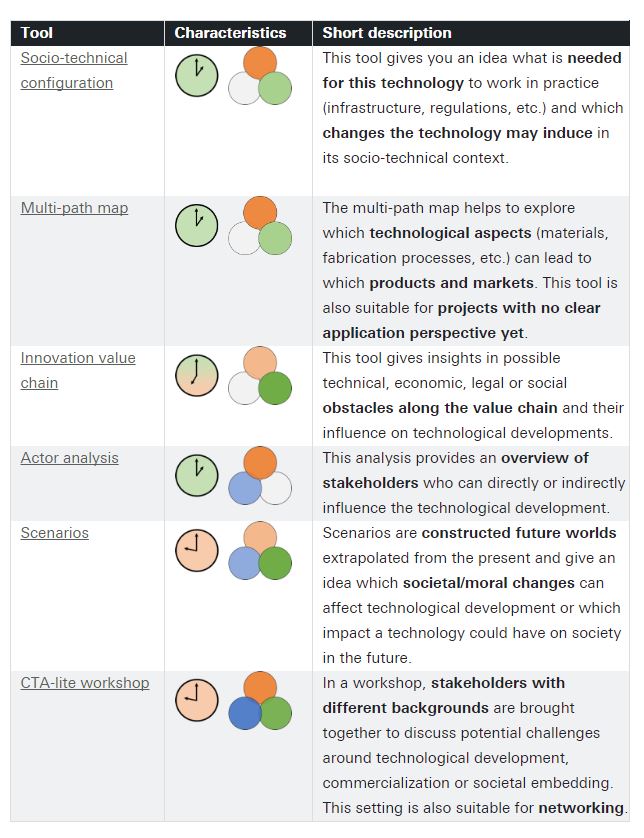The research and innovation programme NanoNextNL has built up a unique and vibrant nano/microtechnology ecosystem at a scale that has never been achieved in any technical field in the Netherlands. This is one of the main conclusions of the final End Term Report of NanoNextNL, which was published last month. The updated End Term Report (2017) shows new achievements of the NanoNextNL programme (2010-2016) regarding science, valorisation and responsible innovation.
Increase in scientific output
Since its start in 2010, NanoNextNL has created a very large knowledge base in nano/microscience and technology as demonstrated in the preliminary End Term Report published in 2016. The recently published update shows an increased output in science:
- Over 1250 peer-reviewed publications
- Over 130 PhD theses; little short of 100 still to be published
- Over 150 publications with an impact factor > 10
- All NanoNextNL themes performed above world-average regarding citations
- At least 95 granted EU projects
- Already 127 unique patents
The updated NanoNextNL Research Appendix (2017) provides detailed information about the scientific output.
Achievements in valorisation
One important mission of the NanoNextNL programme has been to foster the transfer of knowledge from nanoscience and technology into new applications and business. This focus on valorisation has resulted in the following achievements:
- 24 start-ups benefitted from NanoNextNL
- 18 start-ups emerged from NanoNextNL
- 86 demonstrators were developed
- Average Technology Readiness Level (TRL) rose from 4.9 to 6.9
- TRL 4.9: the stage of technology development – validation in a lab environment
- TRL 6.9: the stage of system development – a system/prototype is tested in the relevant working environment
- Over 50% of the participants in the Valorisation Programme have:
- Found new funding
- Acquired a client or potential client
- An estimated market value that remained stable or grew
- The patent-over-budget-filing ratio was 15 times higher than the average within the EU FP 7 programme (normalised by the total budget of NanoNextNL)
Safe-by-Design innovation
Risk Analysis and Technology Assessment (RATA) has been strongly integrated with the NanoNextNL research and development programme, bringing responsible research and Safe-by-Design innovation into practice, also in the development of new businesses. Tools for the detection of nanomaterials and understanding mechanisms of (eco)toxicity were developed to support new regulations and develop international policy. Since 2016 the following results were achieved:
- A toolbox for technology assessment for researchers and technology developers is freely available: www.cta-toolbox.nl
- The RATA research theme participated in about 30 EU projects
- Researchers from the programme have supported the Dutch Ministry of Security and Justice by investigating the significance of nanotechnology for civil security applications
Follow-up to NanoNextNL
The successful NanoNextNL integrated approach involves strongly interlinked programmes composed of collaborative projects between academic and industrial partners. Using this method in a follow-up programme will guarantee a high-return-on investment for Dutch industry and society, and provides an efficient and effective road towards a more sustainable society. The Board of NanoNextNL is now holding discussions with private partners and government ministries to explore the possibilities of a follow-up programme targeting these goals. Researchers from NanoNextNL are active within two routes of the Dutch National Research Agenda (NWA) and have taken the leading role in the route ‘Quantum/nanorevolution’ and the route ‘Materials – Made in Holland’.
About NanoNextNL
A total of 13 universities, 8 medical centres, 12 knowledge institutes and 110 industrial partners have collaborated within NanoNextNL (2010-2016). Since its start in 2010 the research and innovation programme has created a very large knowledge base in nano/microscience and technology, involving over 750 researchers. Together with universities and companies, the Dutch government has invested € 251 million in NanoNextNL.
Read more
• NanoNextNL End Term Report (2017)
• NanoNextNL Eindrapport (2017)
• NanoNextNL Updated Research Appendix (2017)
• Overview of Safe-by-Design tools
• Leaflet Maatschappelijk relevant innoveren met technologische publiek-private samenwerkingen (2017)








